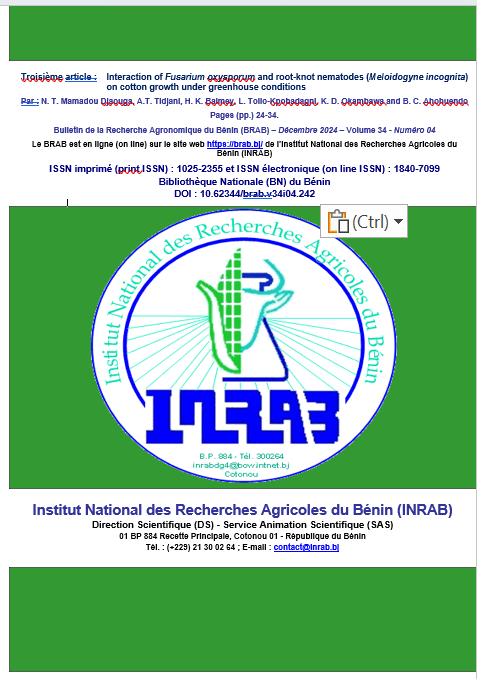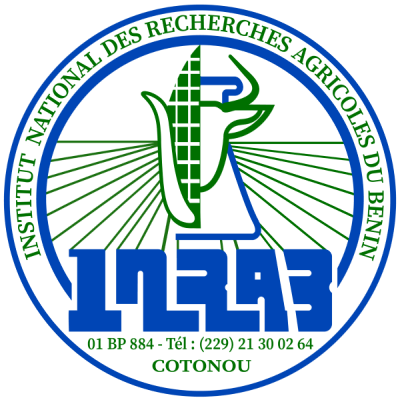Interaction de Fusarium oxysporum et des nématodes à galles (Meloidogyne incognita) sur la croissance du cotonnier en conditions de serre
DOI :
https://doi.org/10.62344/brab.v34i04.242Mots-clés :
Gossypium spp., ravageur, maladie, densité de conidies, BéninRésumé
Fusarium oxysporum est un champignon qui crée d’énormes pertes de rendement sur le cotonnier. En association avec les nématodes à galles, ces pertes deviennent plus importantes. De plus, les densités de conidies de F. oxysporum affectent différemment la culture du cotonnier. L'objectif de l'étude était d’évaluer la virulence des nématodes à galles (Meloidogyne incognita) et de différentes densités du F. oxysporum sur la croissance et le développement de la variété OKP768 du cotonnier en conditions de serre. Un dispositif en randomisation totale comportant 12 traitements répétés chacun six fois a été utilisé. Une combinaison de cinq densités d'inoculum de conidies de F. oxysporum (D1 : 2.106 ; D2 : 4.106; D3 : 6.106; D4 : 8.106 ; D5 : 1.107 par pot) ; une densité d'inoculum de nématodes (1.500 juvéniles/pot) et un contrôle sans nématodes ni fusarium ont été utilisés comme traitement. Après le semis du coton, les nématodes et les conidies de F. oxysporum ont été inoculés (un et deux mois, respectivement) en couronne au collet des plantes. Au cours de l’essai, la température à l’intérieur de la serre a varié entre 27,07°C et 36,8°C tandis que l’humidité a varié entre 37,75% et 83%. Les traitements combinant les nématodes et des densités de 8.106 et 1.107 de Fusarium ont significativement réduit la hauteur, le diamètre au collet et la biomasse racinaires des plantes. Avec ces traitements, les plantes n'ont pas produit de bourgeons floraux et de branches fructifères. Les traitements avec nématodes seuls et combinés à des densités de Fusarium ont réduit les valeurs des paramètres de croissance, en particulier la hauteur, la surface foliaire, le diamètre du collet et la biomasse des racines.

Publiée
Numéro
Rubrique
Licence
Les articles publiés par le Bulletin de la Recherche Agronomique du Bénin sont en libre accès. Ils sont gratuits pour tout le monde, immédiatement téléchargeables dès la publication et distribués sous la licence CC BY-NC-ND (https://creativecommons.org/licenses/by-nc-nd/4.0/).







